Historic Shift in the Recording Industry in the 1920s
Inventions That Changed Music: The Phonograph 1920s(This article takes about 15 minutes to read)
It all started with Thomas Edison
#1 From Invention to Industry
The Evolution of the Sound Recording Industry
The history of sound recording and the record market extended to the mid-1800s, when techniques for catching noise were first developed. There is some proof to recommend that as far back as the 1200s, the notoriously innovative English thinker Friar Roger Bacon handled to tape-record a couple of words crudely, and comparable accounts of ancient novelty developments exist. Throughout the excellent "mechanical age," researchers and innovators focused on rational recreation.
Like record gamers, music boxes had 2 fundamental components: a surface area with musical info and an instrument that equated that info into noise. As the cylinder or disk turned, its bumps put a tune from resonant pieces of metal next to them-- not that various from a record needle vibrating on a record. Like record gamers, some music boxes enabled you to alter the cylinder or disk so that you might hear various tunes.
There was never even the idea that music boxes might one day tape-record or recreate noises-- they made them.
Before the telephone was developed, nobody would have thought of hearing disembodied human voices. If any) authors before the phone hypothesized that noises would end up being caught simply as photography (an 1820s creation) seen sights, and a couple of (.
In the 1850s, researcher Leon Scott de Martinville did build a gadget, the Phonautograph, which graphed out sound much like a seismograph records earthquake vibrations. It included the basics of a record gamer: a hearing horn focusing the sound onto a vibrating diaphragm (precursor to microphones) and a stiff pig's hair sketching the diaphragm's vibration onto a soot-covered paper cylinder.
By the 1850s, telegraph wires were sending out messages throughout entire continents. The traffic of messages rapidly specified where anything that made the system more effective might make a creator abundant (quite like the capability issues which still impact the Internet-- basically, there's just a lot you can fit through any lot of wires, whether they're dashes and dots or ones and nos.).
Among Thomas Edison's first significant developments was the "quadruplex," a system by which a single telegraph wire had 4 synchronized signals travel through it, each on various harmonic wavelengths. This instantly quadrupled the variety of telegrams that could be sent on one line, and with the cash from this creation, Edison established his first research study laboratory.
The concept that the wavelength of an existing going through telegraph wires could be divided into areas led lots of to try out sending out audible tones throughout wires. Quickly harmonic telegraphs were created, which sent out several Morse code signals; everyone tapped out on one note in the musical scale, throughout one wire, with tuning forks resonating at multiple frequencies clicking out the messages at the end.
Alexander Graham Bell was trying out precisely one such gadget when he discovered he might hear not simply a click of a particular frequency; however, when enhanced with an electromagnet, he might quickly hear the vibrating noise of the tuning fork. He tried out more powerful electromagnets until a voice could be magnified, and the telephone was born.
Other developers had wanted to send out tunes throughout telegraph wires. Some thought this might be a novelty telegraph service-- for instance, sending out a song to an enjoyed one, like a primitive "singing telegram." Bell's telephone advancement was far more essential and captured a lot of individuals off-guard-- consisting of the notoriously egotistical Edison. He constantly was sorry for not having created the telephone himself.
Edison was working on a telephone-related concept when he mistakenly found sound recreation. He had created something comparable to the Phonautograph for telegraphs, where inbound Morse code messages were punched into paper strips and then fed back into a telegraph.
The sound quality was terrible at first (as it was for telephones in their early years), and Edison quickly stopped working on phonographs, focusing instead on creating the light bulb. However, he did strategy on getting back to it and visualized 3 storage formats for noise: tape (in fact, long strips of covered paper), cylinders, and flat discs. He likewise made a list of possible usages for this development, which minimized the capacity for making them play music (since of the lousy sound quality of the time). However, highlighted such usages as tape-recording books for the blind, having households protect the voices of senior loved ones, determining gadgets for companies, for the mentor of correct elocution as well as school topics, like clocks that talk (for example, revealing lunch break in a factory), integrated with phones so individuals might tape discussions or messages, and so on and so on.
Just like the birth of the movie about 20 years later, lots of other developers developed working noise reproducers basically at the same time as Edison. Most early gadgets utilized cylinders covered in tinfoil-- not the most long-lasting of media. Each time you played it, the noise would worsen until the foil's imprints were raveled.
The first industrial variation of a phonograph offered to the general public was as a dictation gadget. Cylinder determining makers were pretty popular by the end of the 1880s, utilized by the well-to-do companies. Such makers remained in usage well into the 1950s, when dictaphones using wire or tape instead of wax cylinders changed.
The wax was soft when the record was cut and would be solidified later on. They likewise originated having the groove run side-to-side rather than up and down (as Edison's record grooves did) and again revealed a disc variation of their brand-new records to go with their brand-new cylinders. The Harper's author astutely pointed out that the brand-new disc format might be marked on a press rather than cut one by one as cylinders were.
#2 The First Commercial Uses
His tunes offered enormous quantities of sheet music as quickly as they came out, and because he was a loud brass band, he was likewise able to provide heaps of records. You can still discover Victor records of his from around 1900 for one or 2 dollars in scrap stores, and they are genuinely LOUD records when played on a genuine phonograph. Acoustic phonographs replicate noise in the purest type-- the artist's noise made the stylus cut a groove. On playback, the track recreates the sound straight and physically, without transforming the noises into digital or electromagnetic signals (which level of the volume and variety before turning the signals back into noise.).
Records Begin to Improve.
There was a significant international economic crisis between 1890 and 1894 approximately, which held up to some degree the advance of the recently established record business. One exception, nevertheless, was the Berliner Gramophone Company (which later on ended up being Victor), based on Emile Berliner, a German innovator who emigrated to the U.S.
Berliner was the very first to best the flat hard disc rather than a cylinder and, most significantly, was the very first to mass-produce records. Like many other innovations, from cars and trucks to books, mass production was the necessary step in making it possible for mass consumption.
Even throughout the extreme economic crisis of the early '90s, Berliner handled offered 1,000 gramophones and 25 000 records in 1893. His rivals might still produce a couple of copies of each efficiency on a cylinder, making it nearly difficult to match Berliner's production volume.
A mix of the restoring economy and more trustworthy spring motors set up in phonographs by 1895 assisted in getting the entire market going once again. As work increased and rates of phonographs fell listed below $40 (though about a "magic number" at the time, much as DVD gamers very first chased dropping listed below $400), these gadgets began ending up being a popular customer product-- despite demonstrations from those who ran coin-operated phonographs (who feared that individuals would stop utilizing them. They didn't, as revealed by the continued existence of jukeboxes in a minimum of some facilities over 100 years later on.).
Creators became interested in sound recreation once again as phonographs rose in appeal through the late 1890s. Another researcher patented an approach for sputtering flecks of metal in microscopically exact patterns onto non-conductive (i.e., non-metallic) surface areas back in 1884.
#3 The Threat of Radio
In 1920, business radio started and even by 1921, it had an impact on record and phonograph sales. The record market did get an increase in late 1921, however, when Victor's patents on flat records were beat in court, and instantly numerous independent record business started making records.
It enhanced a lot over the next couple of years, nevertheless, and record business were furious about this service of individuals getting music piped into their houses for complimentary. Numerous listeners, however, thought radios would rapidly make phonographs and the entire record market outdated. Plus, music on the radio never ever used out-- there were no scratches or ticks as there were on your old records.
Similar to the suits significant labels at first responded to digital file-sharing with, record business in the 1920s attempted to prevent records from being used the radio, although stations at the time favored broadcasting live artists (as records used the air led to average sound quality.) They definitely might not stop the development of radio, nevertheless, and after accepting this truth, they concentrated on development to enhance records and record players. Some listeners would constantly desire the alternative of putting on whatever music they desire, rather than listen to the options of a radio station.
In 1925, Victor presented what they called "orthophonic" noise, which indicated the music was taped electrically, with the brand-new electrical microphones and amplifiers, rather of acoustically as was the case prior to. Instruments such as drums likewise appeared on records for the very first time, probably due to the fact that prior to that a drummer would drown out the other noises. Soon after this "electrical noise" transformation, record sales for the leading tunes of the day exceeded sales of sheet music for those very same tunes for the very first time ever.
By the end of the roaring 20s, radio-and-phonograph mixes were being offered as one system. Clearly both mediums discovered a method to match each other; although records were still never ever used air, it never ever injured a significant star's record sales to perform their hits reside on the radio. Aside from that, the flourishing economy, the increased acquiring power of the middle class, the brand-new customer youth (those "flappers" and their fur-coat using partners), and the ever-increasing appeal of jazz all assisted fuel big record sales by the end of the years.
Overall yearly record sales dropped from about a hundred million in 1927 to simply 6 million in 1932. Radio, which from the start was driven primarily by marketing (which tends to remain steady in difficult times) was less terribly struck.
Angels Horn Store:

Bring music to life.
AngelsHorn Mission
If you happen to read this article, and if you happen to be looking for the evolution history and trend of record players, I believe this organized column can be helpful to you.



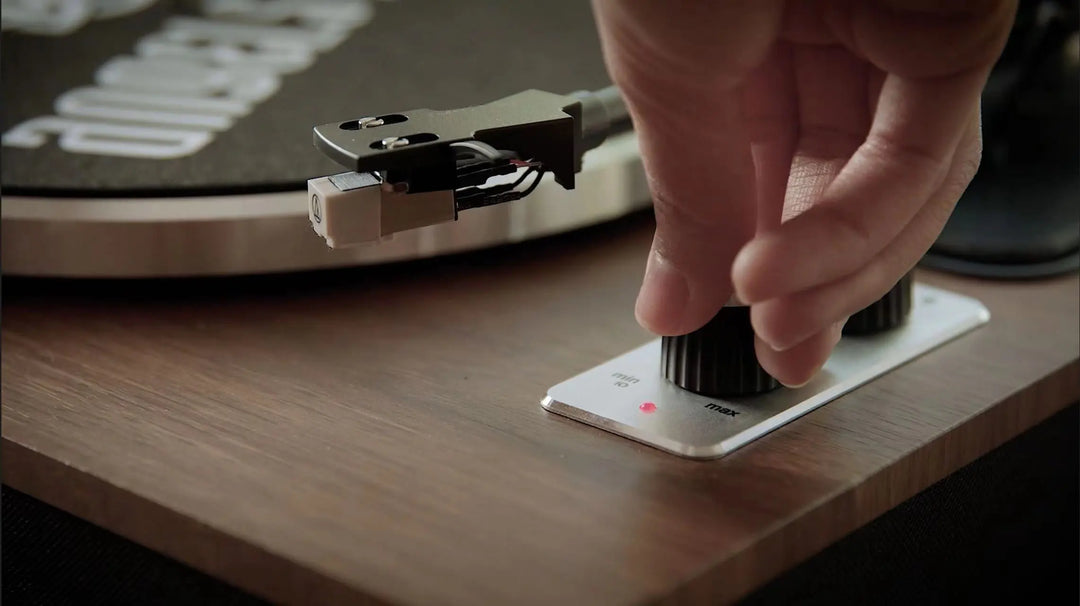
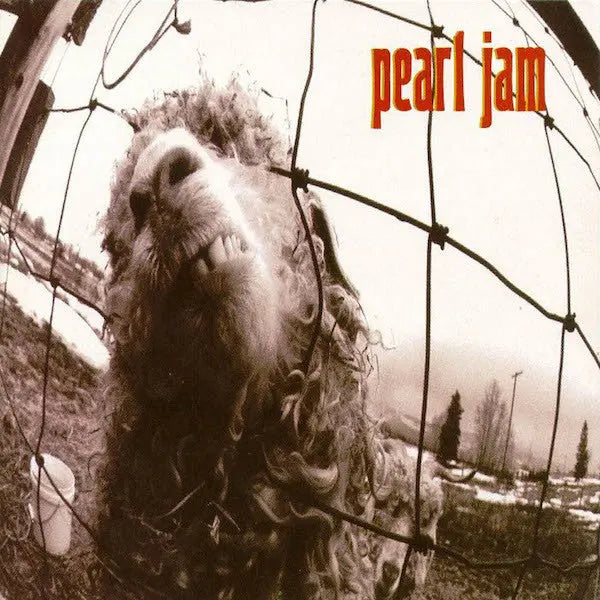
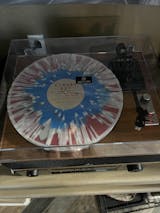
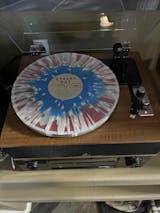

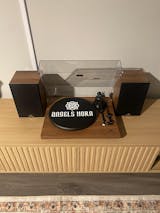


Leave a comment